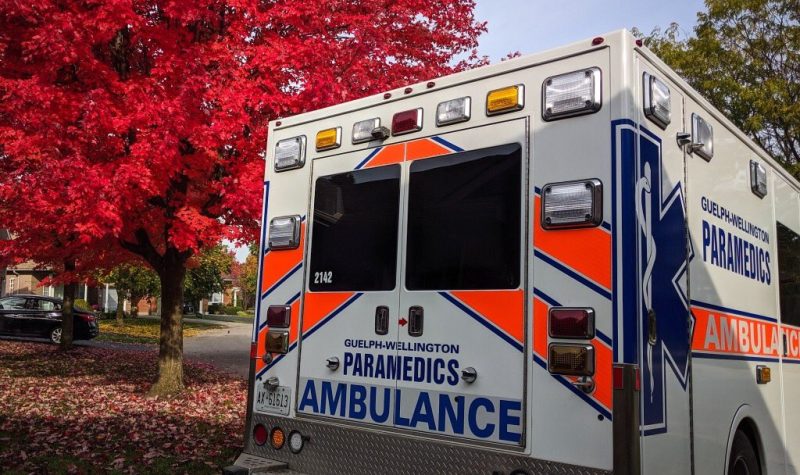Numbers presented at a Social Services Committee Meeting in Wellington County this week showed a slower response to calls in rural areas from Guelph-Wellington Paramedic Service ambulances.
Figures were closer to target in Guelph, while rates of response in areas like Puslinch and Erin were longer.
For example, the 78 per cent of calls responded to in eight minutes or less hit the expected mark in Guelph. That number was 47 per cent in Puslinch and just six per cent in Erin.
Even comparing Guelph to the rest of the county, numbers saw a stark contrast.

County of Wellington numbers were far higher than those of Guelph. Photo via report, County of Wellington.

Guelph's rates were the closest to on par, with just one 2022 number outside the agreed benchmark. Photo via report, County of Wellington.
But the 2022 numbers were impacted by hospital offload delays, which Chief and General Manager of Guelph-Wellington Paramedic Service Stephen Dewar explains persisted throughout the year. Dewar noted these delays occur when paramedics must remain in hospital to care for the patients depending on how busy the hospital is.
He reiterated the importance of stationing ambulances in ideal locations. He says new ideas have been thrown around regarding how to best accomplish a broader quick response.
"Our service is run by the City of Guelph, but we had conversations with the County of Wellington in an arrangement where the county would build the stations and the city would lease them from the county," Dewar said.
"Those discussions are ongoing. If the lease agreement can be reached then the county would put it in their capital budget to build the buildings. We're working on it, and it's not a quick process," he added.
Dewar says smaller municipalities like Mapleton don't get as many ambulances stationed there, but it wouldn't make practical sense to stockpile resources in those pockets.
"We specifically looked at Mapleton township. If we wanted to reach every call that occurred in any given year in eight minutes or less, we would need three ambulances stationed 24 hours a day, stationed strategically across the township," Dewar stated.
"With the number of calls that occur there, each of those ambulances would only do a call every second day, and the cost would be really, really high," he said.
Dewar also pointed out the targets are the same for farm land and urban areas. Even still, he adds Guelph-Wellington Paramedic are working to up their fortitude by changing the structure of their stationed ambulances.
Listen to the CICW story below:


